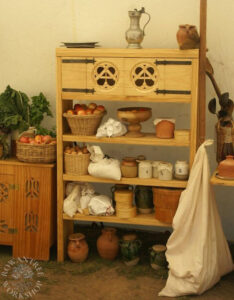My Part is Done
I’m sure you all are tired of reading about my vehicle troubles. I’m sure this won’t be the last post about it.
Base problem, the truck is 15 years old. It was given a new frame, but it is starting to age out.
Major safety issues:
- Right front wheel bearing is bad
- Left front wheel bearing is going bad
- Right front caliber is likely bad or will go bad when pads are replaced.
- Left front caliber is likely bad or will go bad when pads are replaced.
- Front brake pads, both sides, are bad
- Front rotors, both sides, are bad. Wear pattern shows uneven application of force
- Right rear hard line to flex line at frame has bad crimp. It will fail soon
- Multiple other smaller, non-safety issues
The goal was to reduce my costs at the dealer as much as possible. His price on parts is reasonable, he puts a reasonable markup on those parts. He is willing to use customer supplied parts from me. I have told him that he can reject any parts I bring him if they are not up to his expectations.
The total cost of parts, from Rockauto was $514. Of that, only the brake calibers were the right parts. Everything else goes back for store credit, my choice.
Total cost of parts from local shop, over $500. This was ONE wheel bearing, pressed, instead of two, a pair of rotors and new brake pads. Moreover, there is the brake cleaner, brake fluid, two 12 in sections of brake line. I’m glad they know me. I wish they didn’t know me by name when I walk in.
I thought the right front went ok, after I stopped cursing about buying the wrong parts. It is verified that I made the mistake.
I will have my guy inspect my work and fix any errors I made.
The left front did not go as smoothly.
The wheel didn’t want to come off. The use of a long punch and a 5 pound hand sledge and my son’s help got that off.
The process of taking off the caliber is to first take off the flex hose to hard line bracket. This is a 12 MM (head) bolt.
That bolt head is now round and the bolt is still in place. I should have drilled it out with a left-hand drill and then used my other tools to remove it. My vice grips have gone on walk-about, so I couldn’t even use them.
I was able to break the line lose at the caliber and remove the caliber. The rotor gave way after jack bolts and banging.
It was getting late. The calibers did not want to line up. I finally got it installed, and the hard line would not go into place. I left it like that for the night.
Today started with a trip to the parts store for hard-line. Ally strongly suggested that having the part and not needing it was better than needing the part and not having it. Thank you, Ally.
After a bit of cussing, the hard line went into place. It would not hold pressure. It was time to try my hand at bending break line.
The hardest part of me was the fact that I had to stuff 12 inches of hard line where I should have been using a 6-inch length.
Moreover, did you know that the fittings will not slide around curves? They slide freely on the straight part. That was fun, straightening the line enough to get the fitting into place, then bending it back.
This was a painful process. Because there was no flex, I was bending the hardline with a mandrel in place. Think 2 foot long chuck of 1 inch diameter steel bar and a 1.5 inch diameter steel bar, 2 foot long. Yes, they are heavy. They get heavier the longer you have to hold them in place.
It got done. It was tightened to specification, see AVE’s earlier work. “Click”.
No leaks! I’m happy. I spend the time to find the right size for the bleeder valve. Wheel goes back on, the world is good.
It is time to bleed the brakes. The rear brakes go fine. When I go to bleed the right front, there is a puddle of brake fluid. It is leaking.
When I crawl under and review it, it is leaking where the hard line enters the calibers. At that point my daughter arrives home, I catch a ride with her to get another piece of brake line.
This goes a bit better as I could detach the bracket to get things into place.
So, going into the shop, they will replace the bad crimp, replace the left front wheel bearing, not the complete unit. They will check all the bits and pieces.
I did receive a few helpful comments. I do have an air powered impact gun/wrench. It does ok. I need to upgrade it, as it does not produce enough torque.
Because the gun is weak, I normally break the lug nuts loose before I lift the car. This makes it much easier after the car is up.
To access the axle nut, I need to remove the dust cover. To access the dust cover, I have to remove the wheel and rotor. To remove the rotor, I have to remove the caliber. To put the rotor and wheel back on and lower the car is more work than using a pry bar against the lug studs to keep the wheel hub from spinning.













